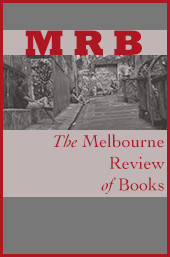 After hunting up an early reference to Write What You Know, I thought I’d have a quick hunt for that other old adage of writing advice, Show Don’t Tell. This is another piece of advice that is useful in some but not all instances for some but not all writers.
After hunting up an early reference to Write What You Know, I thought I’d have a quick hunt for that other old adage of writing advice, Show Don’t Tell. This is another piece of advice that is useful in some but not all instances for some but not all writers.
If you tend to over-labour your writing and use too much description then you might well need to tell not show, after all. Usually telling is required when you need to keep the pace going quickly and when the immediate scene is of less importance, either to the story or the character. You can think of this as a ‘zoom’ even.
I’ll explain a bit by way of an example. In the first example the food in the bakery is not hugely important. In the last example the food in the bakery is going to seem extremely important to the reader. Writing entirely in the first mode will make your writing seem distant and lacking in psychological depth. Writing in the last mode will make writing seem laboured and indulgent.
Toby rushed out onto the street. The snow was deep. He passed a bakery and looked in the window. He was hungry, but his pocket was empty.
Toby rushed out into the street. He slogged into deep snow. His stomach rumbled. Off to his right he noticed a bakery window lit up with golden light. There were buns and loaves heaped up, their crusts golden. He dug around in his pocket but found nothing more than an old button.
Toby rushed out into the street. The snow was so dimly lit by the winter’s day that everything seemed more blue than white. From across the street a bolt of golden light spilled onto the snow. It was a bright square of warmth in a world of blues. Toby’s stomach turned over with growls and protestations of emptiness. He had not eaten all day. The rolls and loaves heaped in the window looked so delicious. Toby slipped his fingers into his pocket and hunted around. For a moment he thought he found a coin, but it turned out to just be an old button cut from mother of pearl.
You need to alternate in and out of the depth required at any given point in the story.
Show Don’t Tell, works as advice on another level too. If you want your readers to know that a villain is a bad person, then you need to have their actions show us this rather than tell us about it. This is sometimes taken a bit literally, with the only accepted approach being a ‘kick the puppy’ one where the villain (or whoever) must be shown doing something overtly bad (or good, or curious or whatever). You can ‘show’ by introducing a character with a past history and a reputation, or by subtly playing with other character’s reactions.
Now, when did this gem of advice first appear in print? Well, there are no citations from the 1800s that I can find so it seems to post-date Write What You Know.
The first citation I can find is from 1930.
“Don’t say this woman is crossed and crabbed in the story. Bring her out and let her snarl in the tale and then you will know that she is. In other words, show, don’t tell.”
John H. Sorrells. The Working Press: Memos from the Editor about the Front and Other Pages. Ronald Press Company, 1930
This is advice for journalists, which is quite a different thing from novel writing advice. It seems to me like perhaps it’s another piece of advice meant for a very specific situation that has been expanded out far more widely than it was ever intended for.

